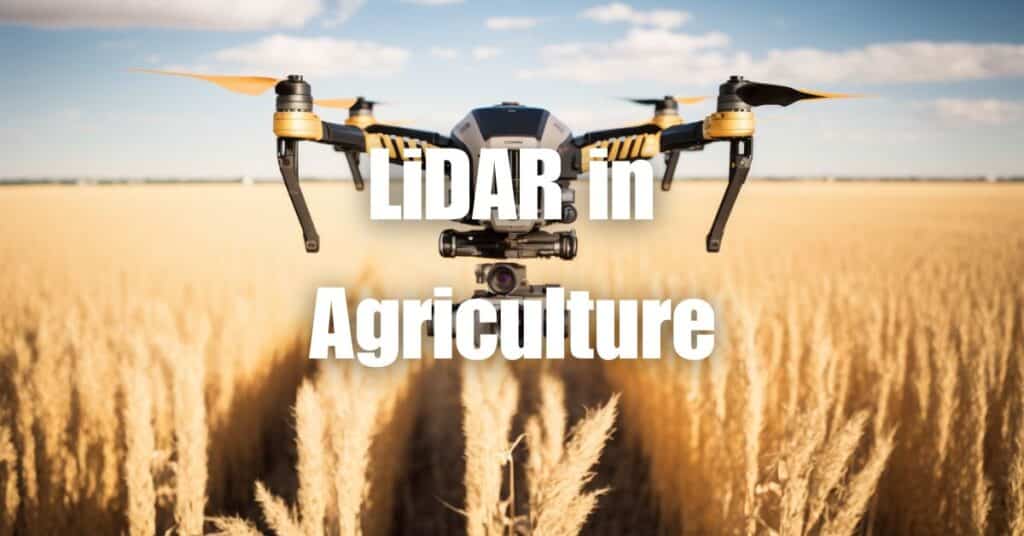In recent years, LiDAR technology has emerged as a powerful tool for studying and understanding our environment. Its diverse applications range from assessing vegetation and forest ecosystems to monitoring air pollution and mapping floodplains. This article will explore the environmental applications of LiDAR, delving into the benefits and advancements that have transformed the way we monitor and assess our natural world. We will also discuss some of the most successful environmental projects that have harnessed the power of LiDAR to unlock nature’s secrets and improve the sustainability of our planet.
What is LiDAR Technology?
LiDAR, or Light Detection and Ranging, is a remote sensing method that uses lasers to measure distances and generate precise, three-dimensional representations of objects or landscapes. It works by emitting laser pulses and measuring the time it takes for the light to travel to the target and back to the sensor. By analyzing the reflected light, LiDAR systems can create detailed point clouds that represent the shape, size, and elevation of objects in the environment.
Components of a LiDAR System
A typical LiDAR system consists of the following components:
- Laser: The light source that emits laser pulses.
- Scanner: The component responsible for directing the laser pulses toward the target.
- Receiver: Captures the reflected light from the target.
- GPS and Inertial Measurement Unit (IMU): Records the position and orientation of the LiDAR sensor, which is crucial for accurate data processing.
Types of LiDAR Systems
There are two main types of LiDAR systems:
Airborne LiDAR: Mounted on aircraft or drones, airborne LiDAR is commonly used for large-scale mapping and environmental studies. It can be further divided into two categories:
- Topographic LiDAR: Primarily used for mapping land surfaces and vegetation.
- Bathymetric LiDAR: Designed for coastal and shallow water mapping, it uses a green laser that can penetrate water surfaces.
Terrestrial LiDAR: These ground-based systems are used for detailed mapping of smaller areas, such as buildings, infrastructure, and archaeological sites. They can be static (stationary) or mobile (mounted on moving platforms).
Environmental Applications of LiDAR
Topographic Mapping
LiDAR is an excellent tool for generating accurate and high-resolution topographic maps. These maps provide crucial information about the Earth’s surface, including elevation, terrain features, and land cover. Topographic maps created with LiDAR data can be used for various environmental purposes, such as hydrological modeling, watershed management, and land use planning.
Forest Management and Vegetation Analysis
LiDAR technology has transformed the study of vegetation and forest ecosystems. It enables researchers to accurately measure tree heights, canopy density, and biomass, which are essential for monitoring forest health, estimating carbon sequestration, and planning ecological restoration projects. LiDAR can also penetrate dense foliage, providing insights into the understory and ground surface, which is crucial for understanding forest structure and biodiversity.
Floodplain Mapping and Analysis
Accurate floodplain mapping is essential for flood risk assessment, emergency planning, and infrastructure development. LiDAR’s high-resolution elevation data allows for precise delineation of floodplains, enabling experts to identify potential flood hazards and predict the impacts of climate change on flooding patterns. This information is invaluable for creating effective flood mitigation strategies and protecting communities from the devastating effects of floods.
Coastal and Marine Habitat Mapping
Coastal and marine habitats are essential ecosystems that support a diverse range of species and provide important services, such as coastal protection and water filtration. LiDAR, particularly bathymetric LiDAR, can be used to map coastal and shallow water environments, such as coral reefs, seagrass beds, and mangrove forests. This information is critical for monitoring habitat health, assessing the impacts of human activities, and informing conservation efforts.
Wildlife Habitat Assessment
LiDAR technology can also be used to assess and monitor wildlife habitats, providing essential information on habitat structure, composition, and connectivity. By analyzing LiDAR-derived data, researchers can identify suitable habitats for various species, monitor changes in habitat quality, and inform conservation strategies to protect endangered species and maintain biodiversity.
Examples of Successful Environmental Projects Using LiDAR
LiDAR-Based Analysis of Urban Heat Islands for Sustainable City Planning
Urban heat islands (UHIs) are areas in cities with significantly higher temperatures than their surroundings due to human activities and infrastructure. LiDAR technology has been used to analyze and map UHIs, helping city planners to design sustainable urban landscapes that mitigate heat island effects. By identifying areas with high surface temperatures and evaluating the impact of green spaces, LiDAR data can inform the development of green infrastructure, such as parks and green roofs, to reduce urban heat stress and improve air quality.
Vegetation Density Mapping Using LiDAR for Ecological Restoration Projects
Ecological restoration projects aim to rehabilitate degraded ecosystems and promote biodiversity. LiDAR technology has been instrumental in mapping vegetation density and assessing the success of restoration efforts. By providing accurate measurements of vegetation structure and composition, LiDAR data enables scientists and land managers to evaluate the effectiveness of restoration techniques, monitor ecological recovery, and guide future conservation strategies.
Quantifying Carbon Sequestration with LiDAR in Forest Management
Forests play a critical role in mitigating climate change by absorbing and storing carbon dioxide. LiDAR technology has been used to quantify carbon sequestration in forests by accurately measuring tree height, canopy density, and biomass. This information is essential for monitoring the effectiveness of forest management practices, estimating carbon stocks, and evaluating the potential of reforestation and afforestation projects in mitigating climate change.
Monitoring Glacier Retreat and Climate Change Impacts with LiDAR Data
Glaciers are important indicators of climate change, and monitoring their retreat is crucial for understanding the impacts of global warming. LiDAR technology has been used to create detailed elevation models of glaciers, allowing scientists to monitor changes in glacier volume and extent over time. This information is invaluable for predicting future sea-level rise, assessing the impacts of climate change on water resources, and informing adaptation strategies.
LiDAR-Assisted Identification and Conservation of Endangered Species Habitats
Protecting endangered species requires accurate information on their habitats and potential threats. LiDAR technology has been used to map and monitor wildlife habitats, helping conservationists identify critical areas for protection and prioritize conservation efforts. By providing detailed information on habitat structure, composition, and connectivity, LiDAR data can inform the development of targeted conservation strategies to safeguard endangered species and preserve biodiversity.
Benefits of Using LiDAR in Environmental Studies
LiDAR technology offers numerous benefits for environmental applications, including:
- High accuracy and resolution: LiDAR systems can generate detailed and accurate three-dimensional data, providing insights into the environment that other remote sensing methods may not be able to capture.
- Speed and efficiency: LiDAR can cover large areas quickly, making it an efficient tool for large-scale environmental studies and projects.
- Ability to penetrate vegetation: Unlike traditional remote sensing methods, LiDAR can penetrate dense foliage, providing valuable information on understory vegetation and ground surface features.
- Versatility: LiDAR data can be used for a wide range of environmental applications, from mapping floodplains to assessing wildlife habitats, making it an invaluable tool for researchers and land managers.
- Integration with other data sources: LiDAR data can be easily integrated with other geospatial data sources, such as satellite imagery and GIS data, to provide a more comprehensive understanding of the environment.
These benefits have made LiDAR an essential tool in environmental research, helping scientists and land managers to better understand, monitor, and protect our natural world.
Challenges and Limitations of LiDAR Technology
Despite its numerous benefits and applications in environmental research, LiDAR technology also has some challenges and limitations:
- Cost: LiDAR systems, particularly airborne LiDAR, can be expensive to acquire and operate. This may limit its accessibility for smaller organizations or projects with limited budgets.
- Data processing and storage: LiDAR generates large volumes of data, which can be challenging to process, store, and manage. Advanced data processing techniques and sufficient computing resources are necessary to handle LiDAR datasets effectively.
- Accuracy limitations in dense vegetation or complex terrain: While LiDAR can penetrate vegetation, its accuracy may be affected in areas with extremely dense foliage or complex terrain. In such cases, additional data sources or complementary remote sensing methods may be required to improve accuracy.
- Weather and atmospheric conditions: LiDAR data quality can be influenced by weather conditions, such as fog, rain, or snow, as well as atmospheric particles, like dust and aerosols. These factors may affect the accuracy and reliability of LiDAR measurements.
- Limited applicability for deep water mapping: Although bathymetric LiDAR is useful for mapping shallow water environments, it is not suitable for deep water mapping due to the limited penetration of the green laser in deep waters.
Despite these challenges, ongoing advancements in LiDAR technology and data processing techniques are helping to overcome these limitations and improve its applicability in environmental research.
Future Outlook for LiDAR in Environmental Applications
The future of LiDAR technology in environmental applications looks promising, with several areas of potential growth and development:
- Improved data processing and analysis techniques: Advances in data processing and machine learning algorithms are expected to enable more efficient and accurate analysis of LiDAR data, improving its applicability in environmental research.
- Integration with other remote sensing technologies: Combining LiDAR data with other remote sensing technologies, such as multispectral or hyperspectral imaging, can provide a more comprehensive understanding of the environment, leading to better-informed decision-making and conservation efforts.
- Miniaturization and cost reduction: Ongoing developments in LiDAR technology may lead to smaller, more affordable systems, increasing its accessibility for a broader range of users and applications.
- Increased use of drone-based LiDAR systems: The integration of LiDAR systems with drones is expected to grow, offering more cost-effective and flexible solutions for environmental mapping and monitoring.
- New applications in environmental research: As LiDAR technology continues to evolve, new applications and use cases are likely to emerge, further expanding its role in environmental research and conservation efforts.
As LiDAR technology continues to advance, its role in environmental research is expected to grow, offering new opportunities for understanding and protecting our natural world.
Throughout this article, we have delved into the vast array of environmental applications of LiDAR technology, demonstrating its incredible potential to revolutionize the way we study and protect our planet. We have explored its numerous benefits, such as improved vegetation analysis, accurate floodplain mapping, and invaluable insights into wildlife habitats, as well as its limitations and future outlook.
To expand your understanding of LiDAR and its numerous applications, we encourage you to visit Aerial LiDAR 101: An Introduction to Its Applications and Benefits. If you need assistance with drone services or have questions about how LiDAR can benefit your projects, don’t hesitate to contact Blue Falcon Aerial for expert guidance and support.




